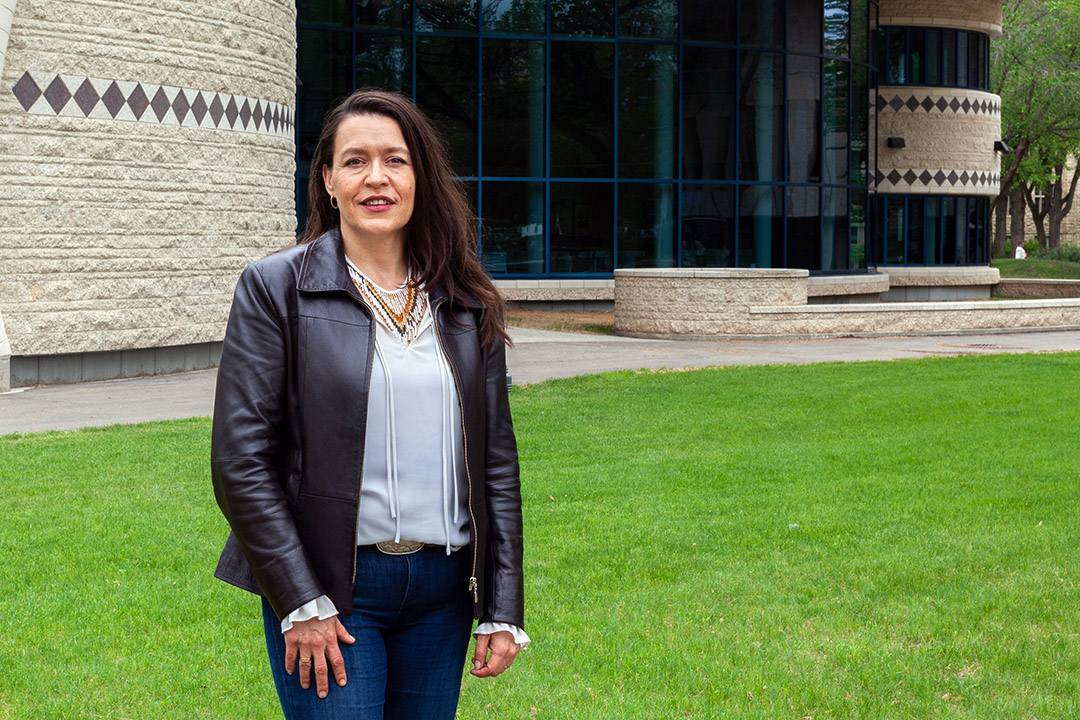
People of the Plan: Experiencing Reconciliation
Much work still needs to be done, but Candace Wasacase-Lafferty believes the University of Saskatchewan (USask) is clearly moving in the right direction when it comes to Indigenization and reconciliation.
By James ShewagaThe senior director of Indigenous Initiatives at USask has witnessed first-hand the changes on campus over the past two decades and is excited about what lies ahead.
“I see some really positive things here at the university,” said Wasacase-Lafferty, a USask graduate who began working on campus in 2001, initially in the Human Resources division as manager for Indigenous Employment. “Where we were 18 years ago, this wasn’t a big agenda item. We had a very small Indigenous population and there weren’t very many Indigenous people working here. But I think over time, and with some changes, the increased participation of Indigenous people has had a positive effect here.”
From physical changes on campus, including the construction of the beautiful Gordon Oakes Red Bear Student Centre, to new strategic commitments to support and increase the number of Indigenous employees and students on campus, Wasacase-Lafferty said the university has made significant progress over the past few years. The new university plan has taken that work one step further, and she is inspired by the commitment of USask leadership to the goal of Experiencing Reconciliation, one of the priorities of the new plan.
“The fact that Indigenous work is so well-highlighted inside this plan gives us promise, and gives us an opportunity for more of an investment of resources to make the work come alive,” she said. “I think without a multi-pronged approach, we will not move the agenda further, so it is going to take the whole campus to make this come alive and I believe this plan has a solid foundation to make that happen.”
A member of the Kahkewistahaw First Nation, Wasacase-Lafferty continues to help lead Indigenous engagement efforts on campus to promote student success, foster awareness, celebrate diversity and build relationships as the university responds to the Truth and Reconciliation Commission of Canada’s calls to action. So, what does reconciliation mean to her?
“Reconciliation is something that every person in this country can take on,” she said. “It’s a personal call to action as well as a public call to action. So, for an institution like a university, the calls to action could be much broader, simply because of the people we have an opportunity to influence and to grow. We have more than 3,000 Indigenous students here and of the 25,000 students that we have impact on, reconciliation can be a call on a mass scale … There is an opportunity to create that identity here and a ripple effect that we can have in this province and in this country.”
The University the World Needs
People of the plan
The University of Saskatchewan’s new seven-year plan through to 2025 is titled The University the World Needs and has been gifted the Indigenous names nīkānītān manācihitowinihk (Cree) and ni manachīhitoonaan (Michif), which translate to “Let us lead with respect.” In each issue of On Campus News in 2019, we will take a look at the 12 major goals of the new plan by profiling individuals involved in the university’s commitment to Courageous Curiosity, Boundless Collaboration and Inspired Communities.

